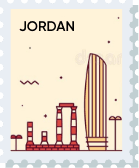React 18: Staying Ahead with the Latest Updates

Quick Summary: React v18.0 has been released! It’s been two months since the last major release, so what can we expect from this new version of React? As expected, React 18 features new server rendering capabilities, Hooks, and React Elements. These are exciting changes that will help developers create user experiences that are faster than ever before.
In summary, it will pose a significant challenge to the TezJS framework, which is also responsible for the construction of UI components.
React is Design Oriented
React 18 delivers the new React Shallow Rendering. It lets you declaratively render tree fragments without having to worry about what happens when the data changes. That frees you up to focus on writing React components that produce the output for their parent nodes, instead of handling the details of every possible change.
React v18 is the newest addition to the React family. It has an amazing UI focus that catches the attention of designers and development teams. Therefore, they embrace React v18, highlight it in their presentation, and actively collaborate with designers and other UI/UX specialists to improve the library.
What is React 18 Concurrent Mode?
Concurrent is the most important feature of React v18.0.0 that has enabled people to use React without worrying about the performance issues related to the significant memory consumption of the new version. Concurrent is a background task in React, which does not mess with your UI components. All it basically does is that it create a separate instance for the DOM nodes instead of creating multiple versions of a single node. This enables you to save the memory significantly without worrying about performance issues like before.
React has organized itself as one of the best solutions to achieve a modern user experience. It has made it simple for developers to build amazing applications that offer a seamless user experience. Its intuitive features make it highly flexible to fit into any kind of application. This has made React developers highly sought after in the industry.
React rendering is a process of undertaking UI updates in an interval. Imagine you are adding some text to your page, as soon as you touch the Keyboard, React scrolls everything behind the text and omits the previous content in front. This is what react does — it maintains the consistency in UI irrespective of unplanned interruptions.
So, you’ve heard that there’s a new version of React. The big news is React Fiber, and the ability to pre-cache rendering for smooth transitions. But another change is the introduction of <Offscreen>, which brings react-router’s <Redirect> method to everyone. It’s a flexible way to create a seamless transition between two screens, in the same tab or a different tab.
New Suspense Features
The goal of react-suspense is to help developers transition from code that uses dynamic imports today (code that does not take advantage of React’s dynamic import feature) to code that uses them in the future. This will make it easier for developers to update their components to use Suspense when it is released. The react-suspense package was created by Michael Jackson as part of the Facebook React team’s work on Suspense, which is part of their ongoing effort to make rendering asynchronous and non-blocking by default.
React Server Side Rendering is a process where we can execute ReactJS code on the server side. This process allows us to enhance our user experience by giving them content faster. It also helps search engines crawl your website quicker and easier. Re-rendering the whole page would ensure up-to-date content being rendered for search engine indexing.
One of the major changes that React version 18 brings is the way it handles suspense. However, in the migration process to React version 18, we would need to make very few changes to our code so as to keep everything working (or close to working) as before.
Streaming Server Rendering
In React 18, this situation is improved. Server-side rendering now allows for incremental updates: components will render asynchronously to state changes, and when all of the components have been rendered, an update callback can be invoked to re-render the main page. By re-rendering as few components as possible once JavaScript is available, server-side rendering ensures a smoother experience for your users, even in complex applications with many slow components.
React Suspense was introduced in React v.18. It allows us to load components asynchronously. With this library, we can pause rendering by wrapping our (Suspense) tag around an async component and the component will not be loaded until it’s ready. This means you can load an image, video, or even a component after everything else has already been rendered on the screen. Further, we can show a loading animation for any UI elements that are yet to be seen by the user.
Automatic Batching
Batching is an integral part of React apps and components for grouping state updates with the help of inbuilt hooks and event handlers. This will help prevent components from re-rendering for all state modifications unnecessarily, resulting in improved overall speed (and performance) of a component. If you have been using React, you know that this wasn’t possible until the release of React 17. But with the latest version – React 18 – the framework has added support for automatic batching, enabling you to improve performance even further.
Allows you to batch state updates from createRoot. This includes native event handlers, asynchronous operations, and intervals. Makes use of bulk and partial requests to reduce the number of calls on the server. Makes integration with Restler support tokens ultra-easy.
Stopping Automatic Batching with flushSync()
React 18 comes with a new method called ReactDOM.flushSync() that helps in synchronizing an arbitrary number of React updates to build output and DOM response at the same time. However, for this method to work, it requires that any code in your app must not read anything straight from the DOM during an update. In other words, if you are using “refs”, event handlers, browsers, or libraries that read the scroll position, dimensions, or other things straight from the DOM then you need to disable automatic batching first by calling setAutoBatching(false) before calling flushSync().
Transition
React recently introduced a new concept called Transition to allow the application to prioritize updates that the developer expects consumers to interact with more frequently. The developer can specify how long an update should take in real-world time to trigger this transition. These urgent updates that intersect with the transition are prioritized ahead of others when the updates occur. Transition was added to React to aid developers who want to emphasize user experience within applications. Especially, it’s useful when incorporating dynamic or content-based components into an application such as news feeds.
New Client and Server Rendering APIs
React 18 has redesigned the APIs to render on the client and server sides. Now, all users can continue utilizing the old React 17 APIs while upgrading to the new React 18 APIs. This gives us the opportunity to have new features added to the mix. Thanks to the Webpack 4 update, we can be confident that our bundle size will go down significantly.
New Strict Mode Behaviors
Strict mode was introduced to the React community in the 16.3 version. It helps to identify the code patterns that could impact the performance of concurrent rendering APIs and displays error messages or code suggestions to help developers improve their code.
New Hooks
React Hooks are the newest trending topic in the world of JavaScript frameworks. React developers and UI designers have been waiting a long time to get this update. In fact, Facebook itself has been working on developing the hooks for 10 months. The primary concept behind the update is that it was introduced because of the functional components used by React. In their words, they wanted to provide more options for developers to write software. Moreover, they wanted to give developers more control over the code needed to accomplish things like animations or state management.
Conclusion
React 18 brings a host of game-changing features and enhancements to the table, revolutionizing the development experience, boosting performance, and unlocking new horizons for crafting cutting-edge web applications. With Concurrent Mode, concurrent rendering takes center stage, resulting in a highly responsive user interface. Meanwhile, React Server Components act as a vital link between server-side and client-side rendering, paving the way for performance optimization and decreased client-side processing. In order to get the most out of React 18, you need to go back to your existing workflows and convert them to this modern version. We will help you with that and make sure you don’t miss a beat on your work. Our React JS developers offer the quality support and expertise required to make this transition smoothly. Contact Brain Inventory to learn more about our IT Services!

Have an idea?
Get in touch, we’d be
happy to hear from you
We are always looking out for new collaborations, whether you are a client who is passionate about a project or a talent who is interested in joining our team, our doors are always open.
locate us

India (HQ)
618, Shekhar Central, Palasia Square, A.B Road, Indore, Madhya Pradesh, 452001
+918109561401

United Kingdom
Brain Inventory, SBVS, 8 Roundhay Road, Leeds, UK, LS7 1AB
+18008209286

Canada
44 Main Street East Milton, ONCanada L9T 1N3
+4166696505

Jordan
185 Wasfi Al-Tal Street, Ammon Oasis Complex P.O Box 4724 Amman 11953 Jordan
+960770781000

USA
720 Seneca St Ste 107 Seattle, USA 98101
+1(206)6533419
if it's digital,we'll make it.
- Numetric - Online Accounting Software similar to QuickBooks
- Bloomia - Kegel exercise
- Virifi - Blockchain Powered Document Certification & Signing Platform
- Revolution Travel CRM - Custom CRM Built for Travel Agents
- Fatoura - Online Invoicing Platform
- My Fit Mantra - Your health partner
- Ocureel - Relation Building and video sharing Application